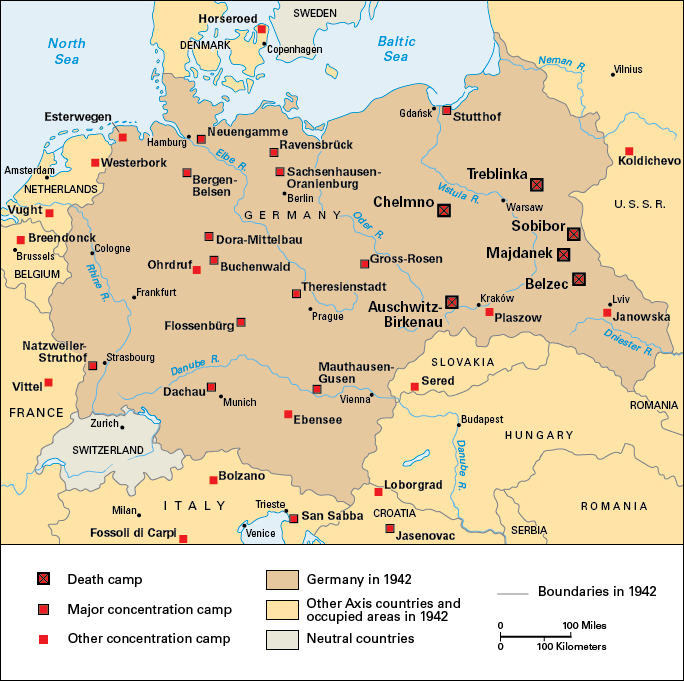On December 1, in Madrid, Spain, an exhibition opened featuring artifacts and personal belongings of people imprisoned at the Auschwitz concentration camp run by Nazi Germany during World War II (1939-1945). Madrid’s Canal Art Centre is the first stop for the exhibition, called “Auschwitz: Not long ago. Not far away.” The exhibit runs in Madrid through June 2018, and it will rotate between world museums for the next seven years.
The Auschwitz complex—a group of three main camps and more than 40 smaller camps—was in the town of Oswiecim in German-occupied Poland. The Nazis used Auschwitz (the German name for Oswiecim) as a killing center, where prisoners were murdered, and as a center for forced labor. About 1 1/4 million people, mostly Jews, were killed at Auschwitz. Other victims included Poles, Roma (sometimes called Gypsies), and Soviet prisoners of war.

The traveling Auschwitz exhibit contains many objects from the Auschwitz-Birkenau State Museum near the Polish city of Kraków. Some 2 million people visit Auschwitz every year. The camp is included in the World Heritage List, an international registry of sites that have great natural or cultural value, as a symbol of the Holocaust. The more than 1,100 tour items also include objects from the United States Holocaust Memorial Museum in Washington, D.C., the World Holocaust Remembrance Center in Jerusalem, Israel, and other other world centers and museums.

The traveling exhibition includes such items as children’s toys, eyeglasses, striped pajamas, and suitcases, as well as a gas mask, a tin that contained poisonous gas pellets, and other grim reminders of the killing that took place at Auschwitz. Artifacts on display are tightly secured at all times, and exhibition spaces meet strict requirements regarding proper transportation and storage and careful lighting and climate control. The items are also presented in historical context to remind the public of the circumstances that led to the rise of Nazi Germany and the atrocities of the Holocaust.
Untitled Document
Can't view the linked articles? Subscribe to World Book Online

World Book Online delivers a progressive sequence of core databases supported by supplemental
tools, such as language translation, graphic organizers, and unique Webquests. Moving from
Early World of Learning to World Book Advanced, World Book Online aligns end-users with their
appropriate learning levels. Each stand-alone site provides additional features to support the
needs of users’ specific capabilities.
The World Book Difference
World Book combines cutting-edge technology with traditional editorial excellence to produce
authoritative, trustworthy, and unbiased content. The digital content is updated in real time and
carefully curated for each learning level. Accessible 24/7, the content is available on a variety of devices.
World Book Online combines 21st-century instructional techniques with timely information.
By breaking down complex topics and using easily understandable text, World Book Online helps to
build fluency and increase comprehension. Featuring single sign-on capability, these sites are paired
with highly visual content to engage even the most reluctant reader. Our collection of resources kindles
a lifelong learning experience for every user. This adherence to clarity, currency, and accuracy makes
World Book’s digital offerings an information hub for the classroom, library, and beyond.
Image 1: A barracks that held Auschwitz prisoners is among the items displayed in the traveling exhibit. Credit: © Musealia/Auschwitz-Birkenau State Museum
Image 2: This wooden box on display was made by an Auschwitz prisoner. Credit: © Pawel Sawicki, Auschwitz-Birkenau State Museum
Image 3: The Auschwitz complex was just one of many Nazi concentration camps. This map shows a fraction of the hundreds of camps throughout Europe. Credit: WORLD BOOK map